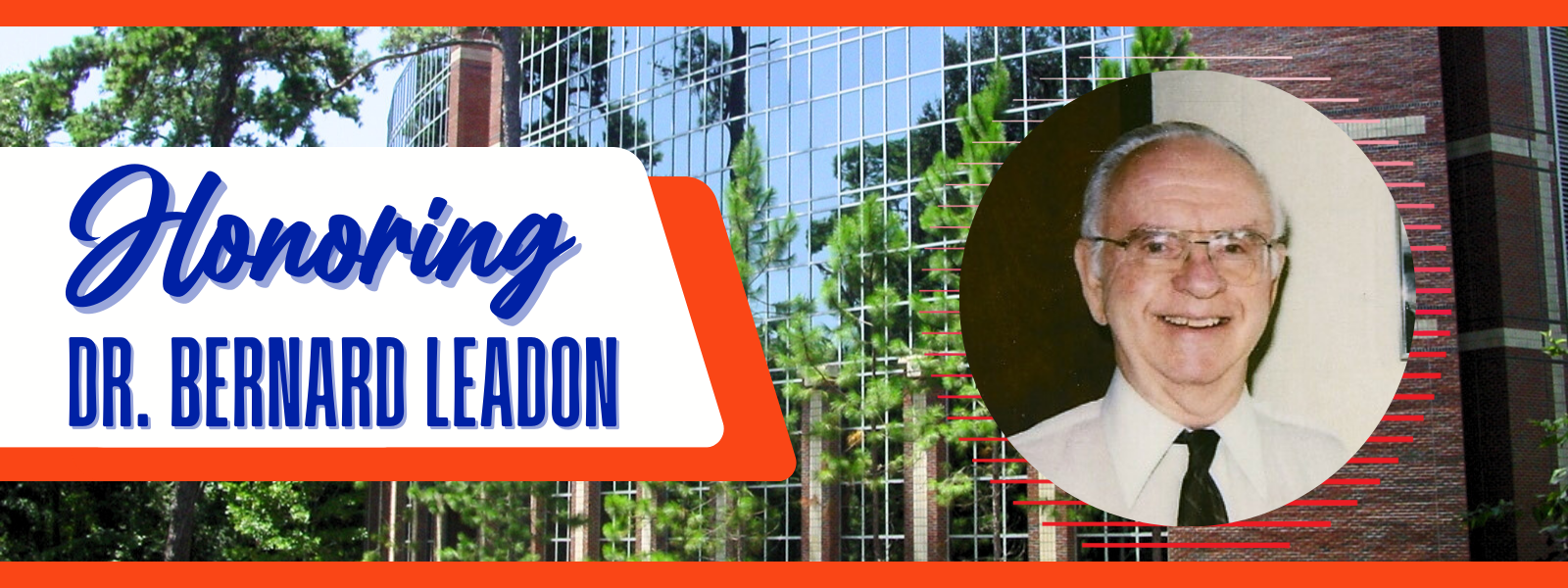The impact that Dr. Bernard Leadon had on his students and the Gainesville community is unparalleled.
Dr. Bernard Leadon was a well-known professor in the Department of Mechanical and Aerospace Engineering, but before his time in the Swamp, Bernie wore many other hats.
Bernard was born in November 1917 in Farmington, Minnesota, the son of Bernard Matthew Leadon Sr. and Ruth McDonel Leadon. He and his wife Ann Sweetser had 10 children and 8 of them received their degrees from The University of Florida. He graduated from the College of St. Thomas in Minneapolis in 1938. After working in northern California, he returned to the University of Minnesota to earn a master’s degree in Aeronautical Engineering.
During World War II, he worked as an airplane designer at the Curtiss-Wright research lab in Buffalo, New York. There, he helped design an early computer shortening the time to design airplane wings, which were rushed into the high velocity wind tunnel for testing and into production for the war effort. Bernard eventually donated his prototype computer to the Smithsonian Museum.
After the war, he married Ann Sweetser of Minneapolis, and returned to the University of Minnesota to teach engineering and complete a doctorate in Aeronautical Engineering in 1955. He insisted that the University acquire surplus military land to start the Rosemount Aero Research Lab, where he built the wind tunnel and used it for research. While working in the aerospace industry in San Diego, California, he taught engineering at San Diego State University. In 1964, he moved his family to Gainesville, Florida, to teach aerospace engineering at the University of Florida and via closed-circuit television to satellite classrooms at the Kennedy Space Center, in Orlando Central Park and in West Palm Beach. His students appreciated his personalized approach and numerous times voted him Teacher of the Year.
Former student, Michael Generale, shares that Dr. Leadon had a huge impact on his career.
“Most of my professors simply presented the material and answered our questions. He always made us students feel welcome in his office. He didn’t just present theory in class; he shared insights with us from his years in the Aerospace industry. I think that’s what set him apart from most of my other professors. He gave us little projects in our lower-level classes that allowed us to apply the theory he taught us. In that way he gave us a taste of what our professional career could be like.”
Michael also went on to share that, “this was exemplified by the AIAA student paper competition we entered as part of our Senior Design class. With his guidance and tutelage, our group of 12 students designed a solar-powered aircraft we called the “Sonnenflieger” (German for “Sun Flyer”) that foreshadowed an extremely similar design NASA would fly some 15 years later called the Helios.”
Not only was Dr. Bernard Leadon a successful professor and engineer, but he was also a family man.
Former and current Mechanical and Aerospace Engineering students and faculty at the University of Florida will continue to be inspired by the impact Dr. Bernard Leadon had on our department then and for years to come.
Information for this article was gathered from Legacy.com/obituaries.

